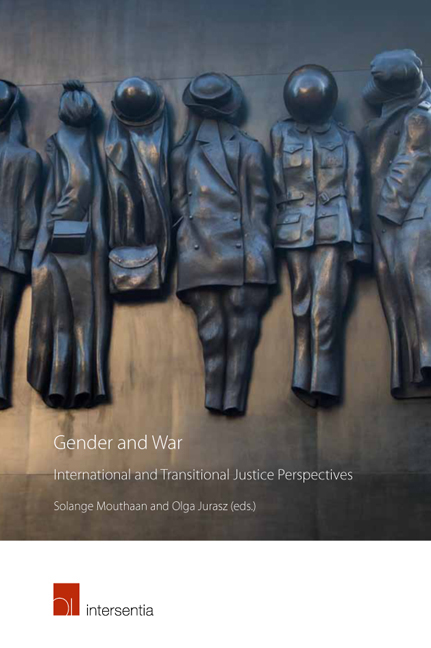Book contents
- Frontmatter
- Contents
- List of Cases
- List of Abbreviations
- List of Contributors
- Introduction
- PART I WOMEN'S INVOLVEMENT IN ARMED CONFLICT
- PART II MEN AND CHILDREN'S EXPERIENCES OF ARMED CONFLICT
- Towards a Gender Analysis of Sexual Violence Against Men and Boys in Conflict: Incorporating Masculinities Theory into Feminist Theories of Sexual Violence Against Women
- Children and Armed Conflict: Pitfalls of a ‘One Size Fits All’ Approach
- PART III GENDERED EXPERIENCES OF INTERNATIONAL CRIMINAL JUSTICE
- PART IV GENDERED EXPERIENCES OF TRANSITIONAL JUSTICE
- PART V CONCLUSIONS
- About the Editors
Children and Armed Conflict: Pitfalls of a ‘One Size Fits All’ Approach
from PART II - MEN AND CHILDREN'S EXPERIENCES OF ARMED CONFLICT
Published online by Cambridge University Press: 30 March 2019
- Frontmatter
- Contents
- List of Cases
- List of Abbreviations
- List of Contributors
- Introduction
- PART I WOMEN'S INVOLVEMENT IN ARMED CONFLICT
- PART II MEN AND CHILDREN'S EXPERIENCES OF ARMED CONFLICT
- Towards a Gender Analysis of Sexual Violence Against Men and Boys in Conflict: Incorporating Masculinities Theory into Feminist Theories of Sexual Violence Against Women
- Children and Armed Conflict: Pitfalls of a ‘One Size Fits All’ Approach
- PART III GENDERED EXPERIENCES OF INTERNATIONAL CRIMINAL JUSTICE
- PART IV GENDERED EXPERIENCES OF TRANSITIONAL JUSTICE
- PART V CONCLUSIONS
- About the Editors
Summary
INTRODUCTION
With her words, more than 20 years ago, Graç a Machel urged the United Nations ‘General Assembly to devote attention to the plight of children in armed conflict. Her report highlighted the devastating effects of armed conflict on children's day-to-day lives and communities. It proved to be a real eye-opener for the World and thus, under the helm of the Security Council, the United Nations (UN) established a system to afford children better protections.
We have come a long way since this influential report. Children affected by armed conflict occupy an important place within the UN's peace and security agenda. They are also the recipients of international legal protections. However, when exploring the effects on children of the conflict in the Syrian Arab Republic (Syria), it is difficult to discern meaningful progress on the ground. Children still suffer unduly from the consequences of armed conflict, particularly in areas under siege, thus it may be questioned whether existing legal protections are effective and sufficiently child-centred in their approaches. In addition, the Syrian conflict demonstrates how specific concerns of girls may be silenced by the broader framework of childhood or womanhood, thus positioning girls at the peripheries of legal protections.
First, girls are children. There are many common ways in which children suffer from the consequences of armed conflict, such as death, injury and poverty. Each of these harms are detrimental to children's well-being. However, international law takes a gender-neutral approach by which children are identified as a homogenous category, but in which the boy-child's experiences have become the dominant norm. This stance fails to recognise that children are also identifiable by other categories, such as religion, ethnicity or indeed gender, as influenced by their contextual background in existence before and during armed conflict. The UN's approach to children in conflict has been to identify six grave violations on a case-by-case basis, against which children should be protected. These are killing and maiming of children; recruitment or use of children as soldiers; sexual violence against children; attacks against schools or hospitals; denial of humanitarian access for children; and abduction of children.
- Type
- Chapter
- Information
- Gender and WarInternational and Transitional Justice Perspectives, pp. 119 - 144Publisher: IntersentiaPrint publication year: 2019



